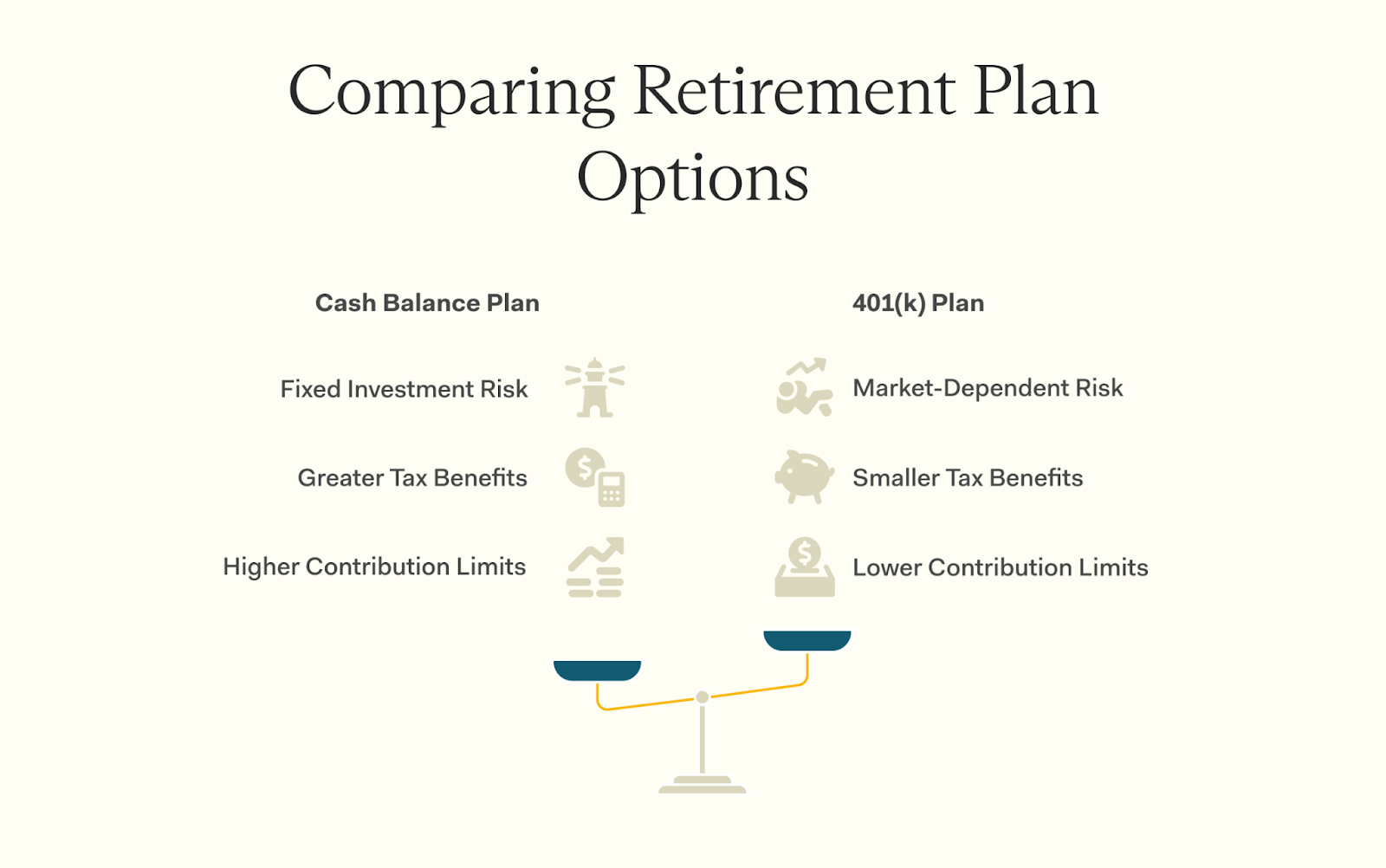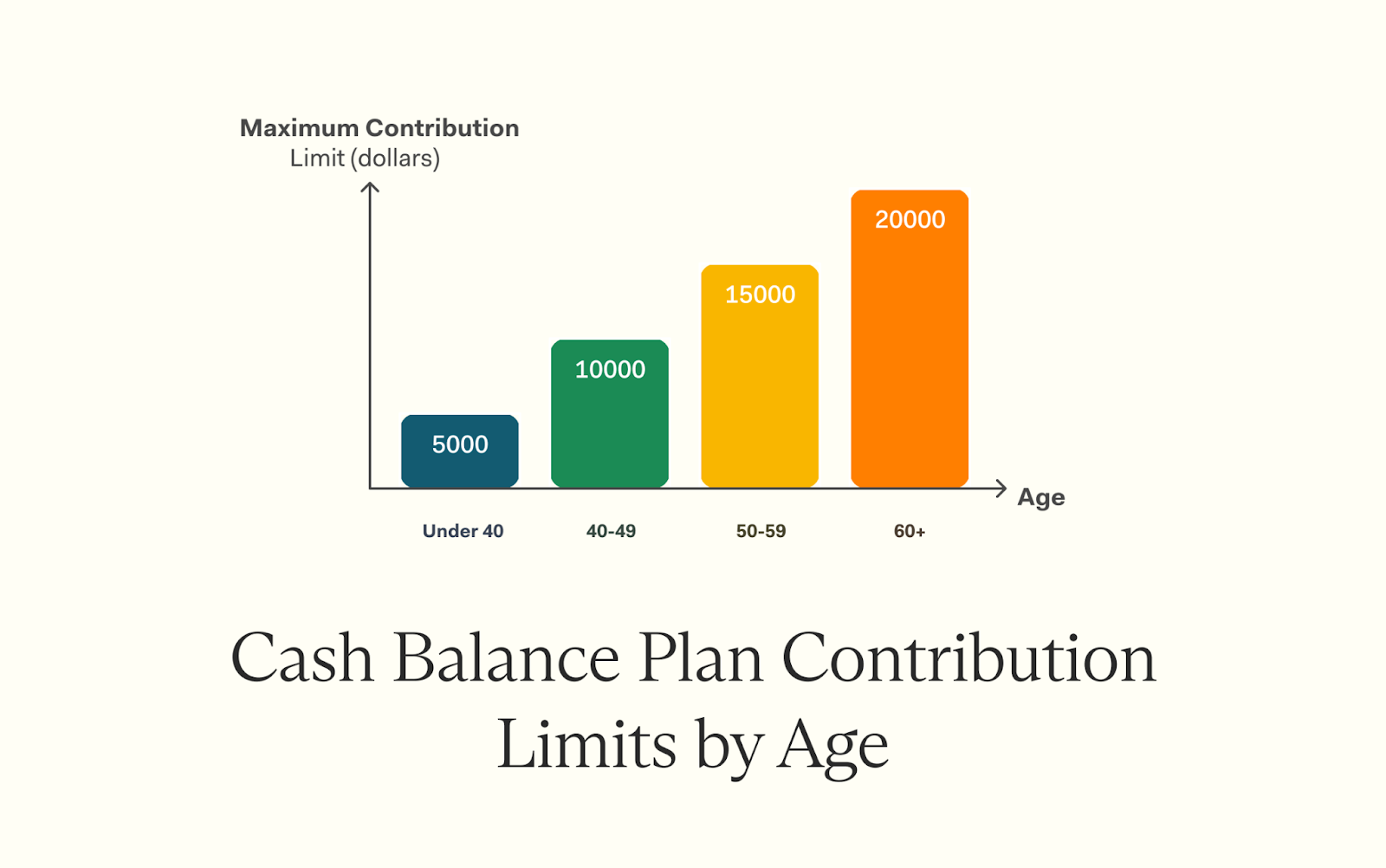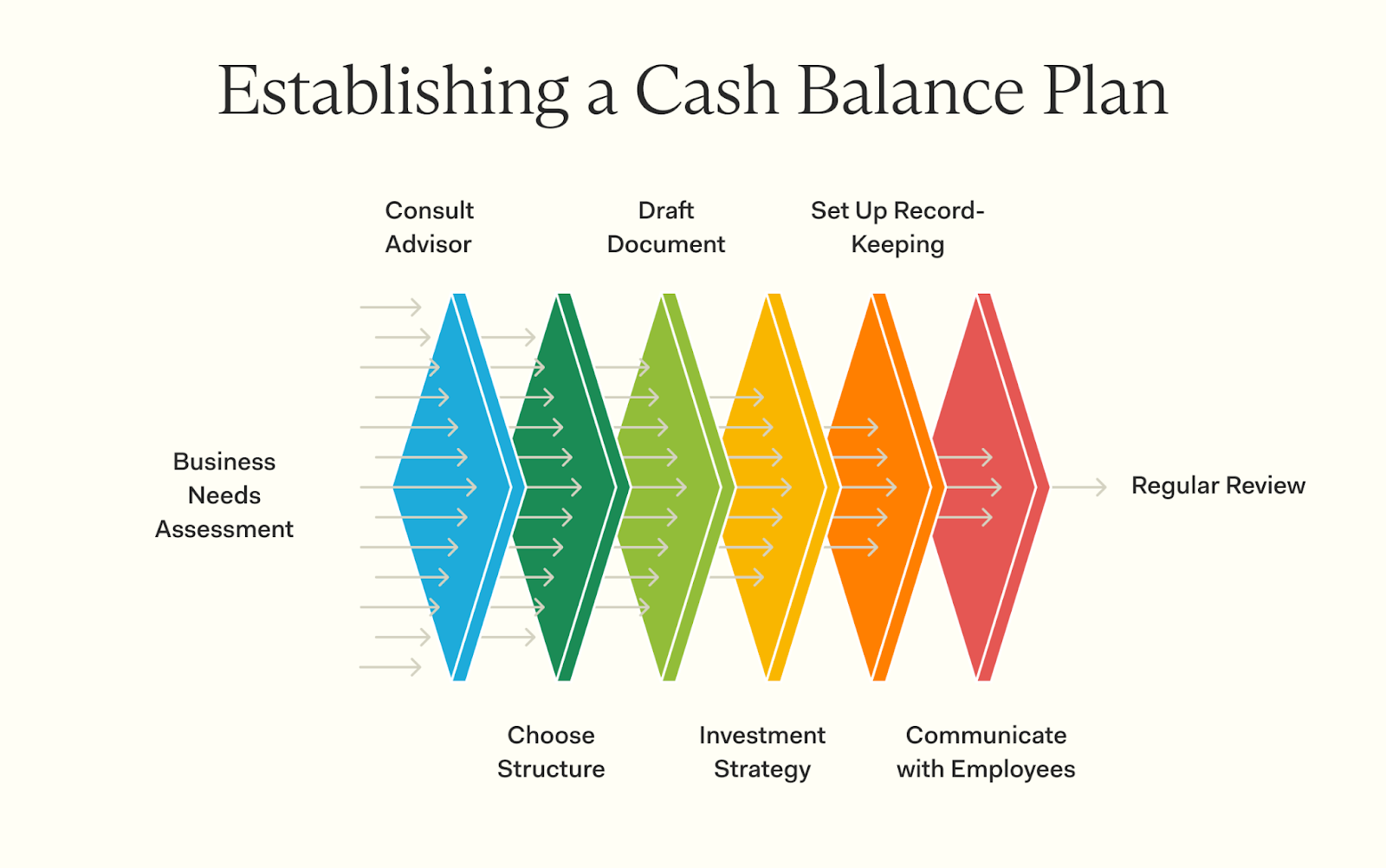Explore how a cash balance plan can enhance your retirement savings and provide financial security. Read more to understand its benefits for your future.
Business owners often seek better ways to save for retirement, favoring plans that provide significant savings and tax advantages. A cash balance plan stands out as a defined benefit pension plan, offering the opportunity to save more money compared to other options.
In a cash balance plan, accounts increase annually due to two main factors: employer contributions and an interest credit. This combination can rapidly enhance your retirement savings.

This type of defined benefit plan works like a traditional pension plan but simpler. Each participant gets an account. This account grows every year from employer contributions and interest credits, guaranteed by the plan.
Cash balance plans use a hypothetical account balance to show benefits. This makes it clear for participants to see their benefits and easier for employers to handle their responsibilities.
Cash balance plans mix features of traditional defined benefit plans and defined contribution plans. They offer advantages from both types.
The growth rate of these accounts is set by the plan document, not by participant's investment choices or market performance. This reduces investment risk for employees while helping grow retirement savings.
When reaching retirement age, participants can choose to get their money as a lump sum distribution or as monthly payments through life annuities backed by the Pension Benefit Guaranty Corporation.

Each employee has an account in a cash balance plan. Every year, the company adds money to these accounts through pay credits. These can be a fixed amount or a percentage of the employee's salary.
The accounts also grow each year from investment earnings, which are set by the employer and not tied to actual market performance.
When employees retire, they receive their benefits either as a lump sum payment or as lifetime pension benefits. If the plan's investments perform well, employers might reduce future contributions.
On the other hand, if investments underperform, employers must cover the difference. This makes managing cash balance contributions and investment earnings important for growing retirement savings and getting tax benefits.
Cash balance plans offer great perks for business owners. They allow high contributions, which means more savings for retirement. These plans can also lead to significant tax savings.
Plus, they help grow retirement accounts faster.
Most cash balance plans let business owners contribute much more than traditional retirement accounts. The IRS sets high contribution limits for these plans, making them attractive.
The amount a business owner can contribute can be substantial, depending on factors like age and compensation. It's critical to consult with a plan actuary for personalized contribution limits that meet your specific needs.
These high limits help boost retirement savings fast. They are great for successful business owners who want to grow their retirement account quickly while enjoying tax benefits at the same time.
High contributions lead to better retirement benefits.
A cash balance plan offers significant tax advantages for business owners. Contributions are often tax-deductible. This means you can reduce your taxable income, which lowers your overall tax bill.
Additionally, funds in a cash balance pension grow tax-deferred. You won't pay taxes on the investment gains until you withdraw them in retirement.
These contribution limits are generally higher compared to traditional plans like 401(k)s, and can vary based on several factors including age and compensation. It's essential to work with a specialist to understand these limits and ensure they align with IRS regulations.
Tax savings can be considerable, especially as contribution amounts increase over time.
Cash balance plans help boost retirement savings growth. They create a hypothetical account balance that increases annually through employer contributions and a predetermined interest crediting rate, typically between 4% to 6%. However, actual growth can also be influenced by the plan's investment performance.
This plan allows contributions to grow tax-deferred, which means you won't pay taxes on these gains until withdrawal.
A cash balance pension plan protects your assets as well. It reflects actual contributions in the participant's account and helps ensure better planning for future needs. With significant tax advantages, business owners can lower their tax liabilities while building wealth for retirement through effective employee benefit plans like this one.
Maximizing contributions is key to getting the most from a cash balance plan. Here's how to boost your retirement savings effectively.
A cash balance plan works well with a 401(k). Both plans help business owners save for retirement. With a cash balance plan, the potential for higher contribution limits exists, especially for older participants. For instance, while the 2025 maximum contribution for a 401(k) is $23,500, contributions to a cash balance plan can exceed $400,000 depending on the participant's age and compensation.
This means more money goes toward your retirement savings, which grows tax-deferred.
Maintaining both a cash balance plan and a 401(k) simultaneously provides the opportunity to maximize your benefits. You can add contributions from each plan separately to enhance your savings growth optimally. Many law firms adopt cash balance plans as part of their overall strategy, allowing them to benefit from substantial tax advantages too.

Cash balance plans work well for business owners looking to boost retirement savings. They suit employers with high incomes who want to save more than a typical 401(k) allows. If you run a profitable business, a cash balance plan could make sense.
For example, in 2025, while the maximum contribution for a 401(k) plan is $23,500, cash balance plan contributions can be significantly higher, potentially exceeding $400,000 for older participants, depending on factors such as the participant's age and compensation.
Companies that can commit to annual, mandatory funding based on a formula specified in the plan document should consider them. This includes those ready for long-term contributions.
Businesses can maintain both a cash balance plan and a 401(k) plan simultaneously to maximize retirement savings and tax benefits. The design of the cash balance plan offers significant tax advantages: employer contributions are tax-deductible, reducing the company's taxable income, and for employees, contributions and earnings grow tax-deferred until retirement, when withdrawals are taxed as ordinary income.
Business owners aiming for maximum balance in their retirement funds will find these plans beneficial, especially when combined with profit-sharing options.
Setting up a Cash Balance Plan involves clear steps. This plan design can help business owners boost retirement savings.
A cash balance plan offers business owners a powerful way to save for retirement while reducing taxable income. With higher contribution limits than a 401(k), which are age-dependent and subject to IRS regulations, it's an excellent strategy for high earners looking to tailor their savings goals effectively. Consulting a financial advisor will help clarify your specific allowable contributions.
Ready to optimize your retirement plan? Speak with a Farther financial advisor today to explore if a cash balance plan is the right strategic choice for your business, ensuring it meets your obligations under varied regulations including the Employee Retirement Income Security Act (ERISA) and the Internal Revenue Code (IRC). Your commitment to annual contributions and strict compliance with these legal standards is critical.
Cash balance plans offer great benefits for business owners. They allow high contribution limits and offer tax advantages. These plans help your retirement savings grow faster.
Maximizing contributions is easier than you think. Combining this plan with a 401(k) can boost your retirement strategy even more. Business owners should consider this option to secure their financial future.
If you're ready, take the next step! The choices you make today can lead to a brighter tomorrow.
A cash balance plan is a type of defined benefit plan designed specifically for business owners. It allows them to contribute more towards their retirement savings than traditional plans.
Unlike typical retirement plans, the contributions in a cash balance plan are determined by a formula based on the participant's age and income, allowing for larger contributions as one gets older.
Implementing a cash balance plan can provide significant tax advantages for your business while also enhancing your employees' retirement benefits, making it an attractive option to retain talent.
While beneficial, setting up and maintaining such plans require careful planning and administration due to complex regulations involved; hence professional advice might be necessary before deciding on this route.